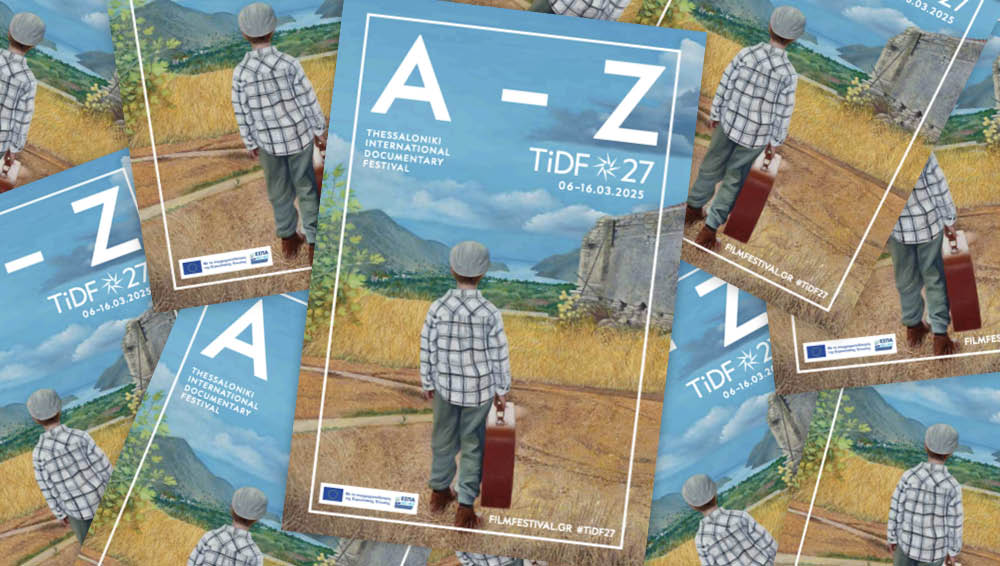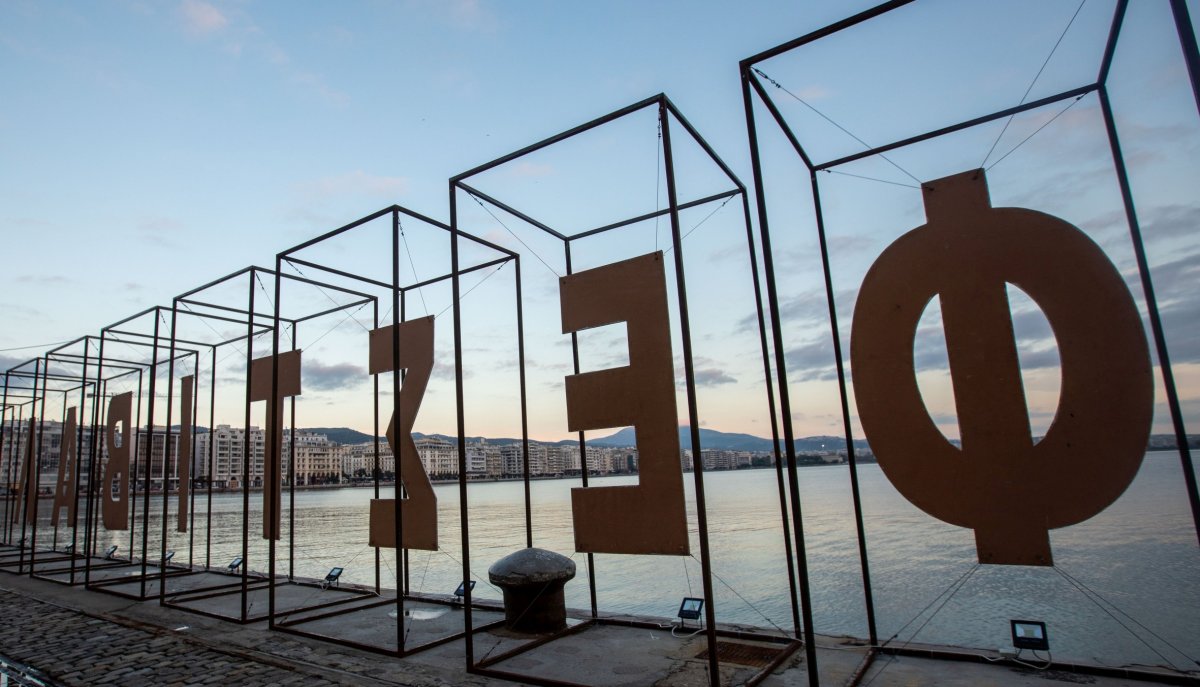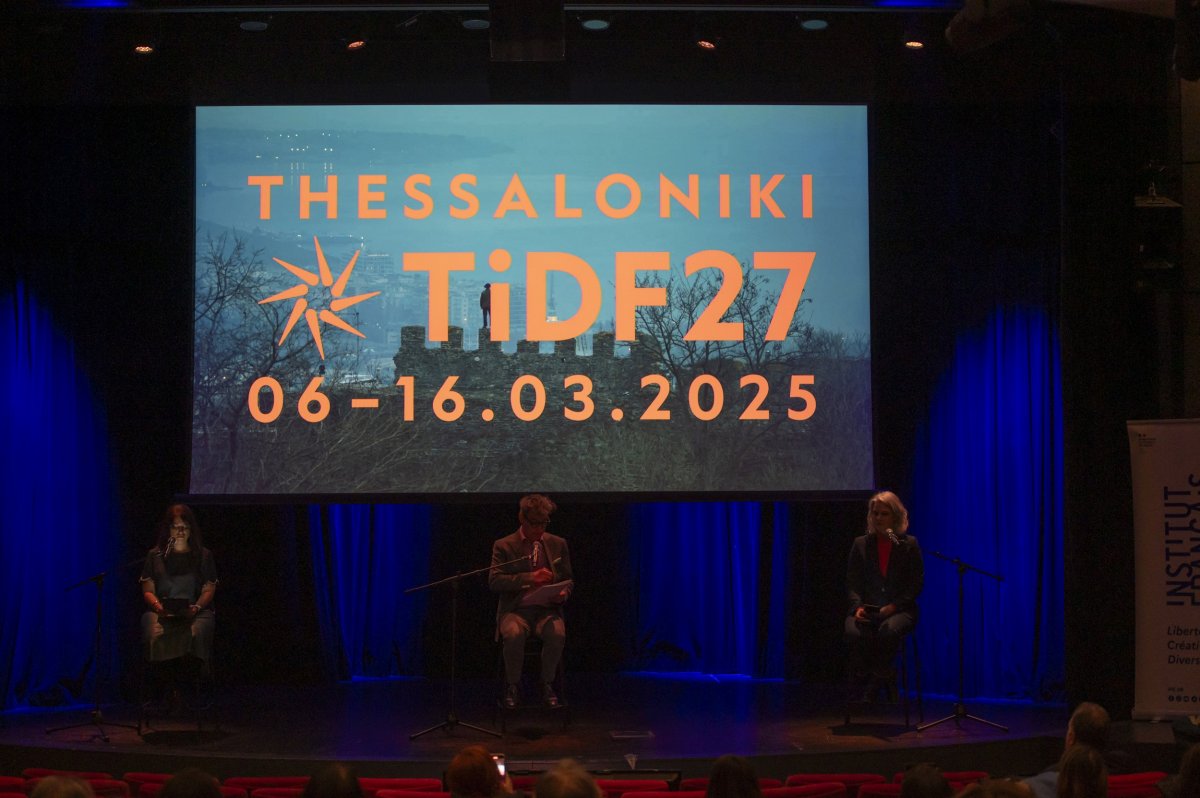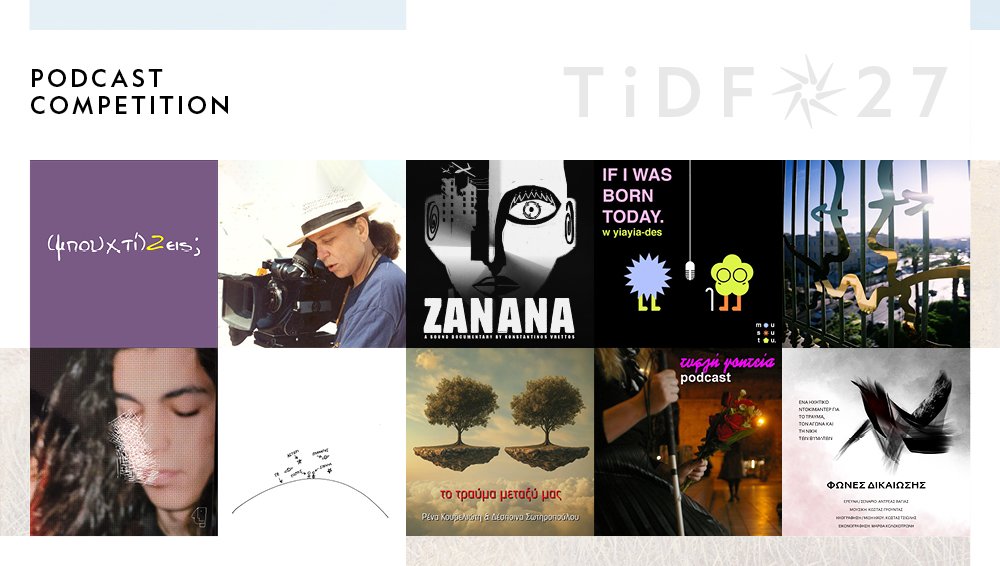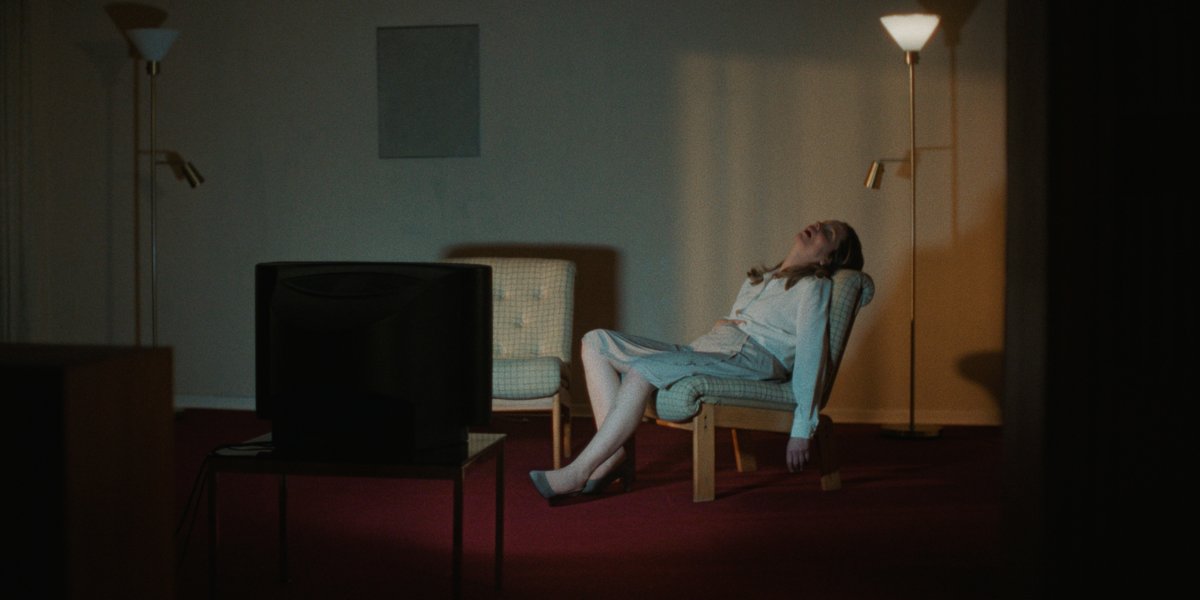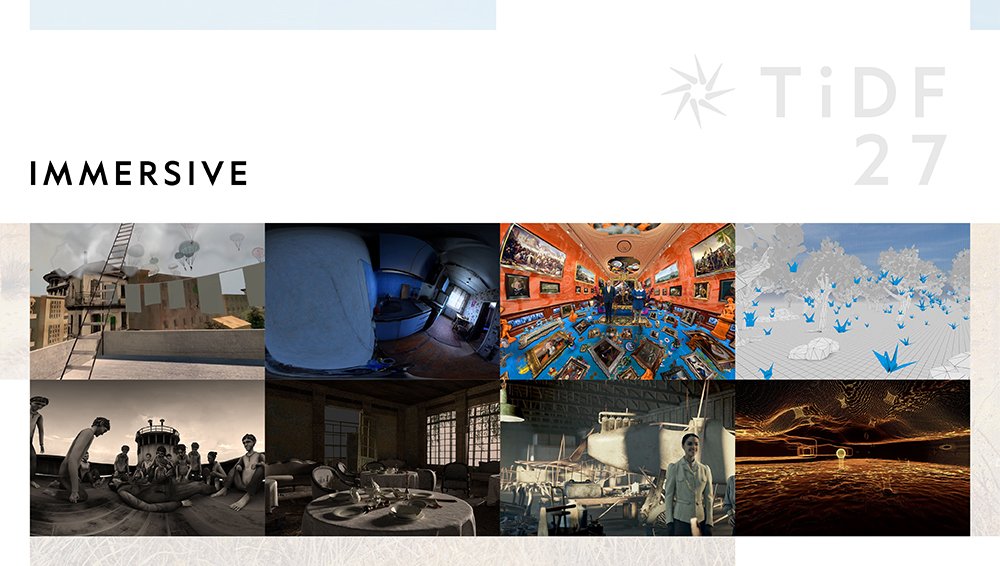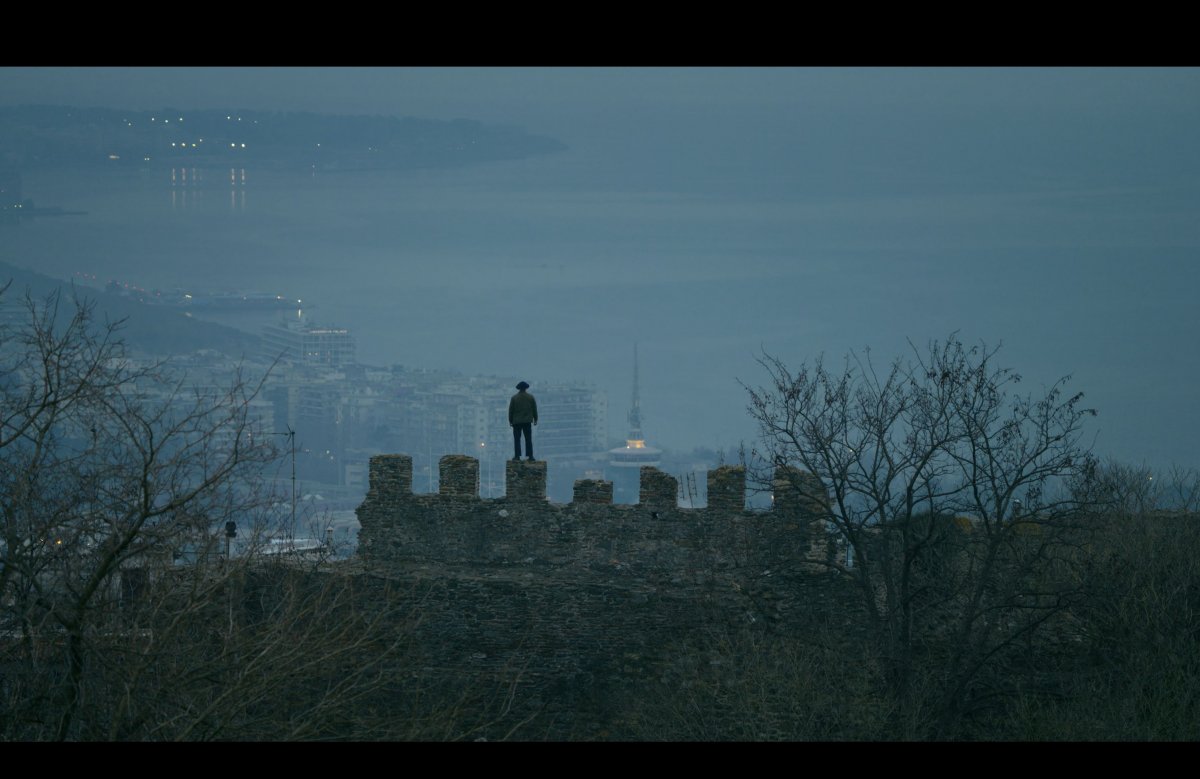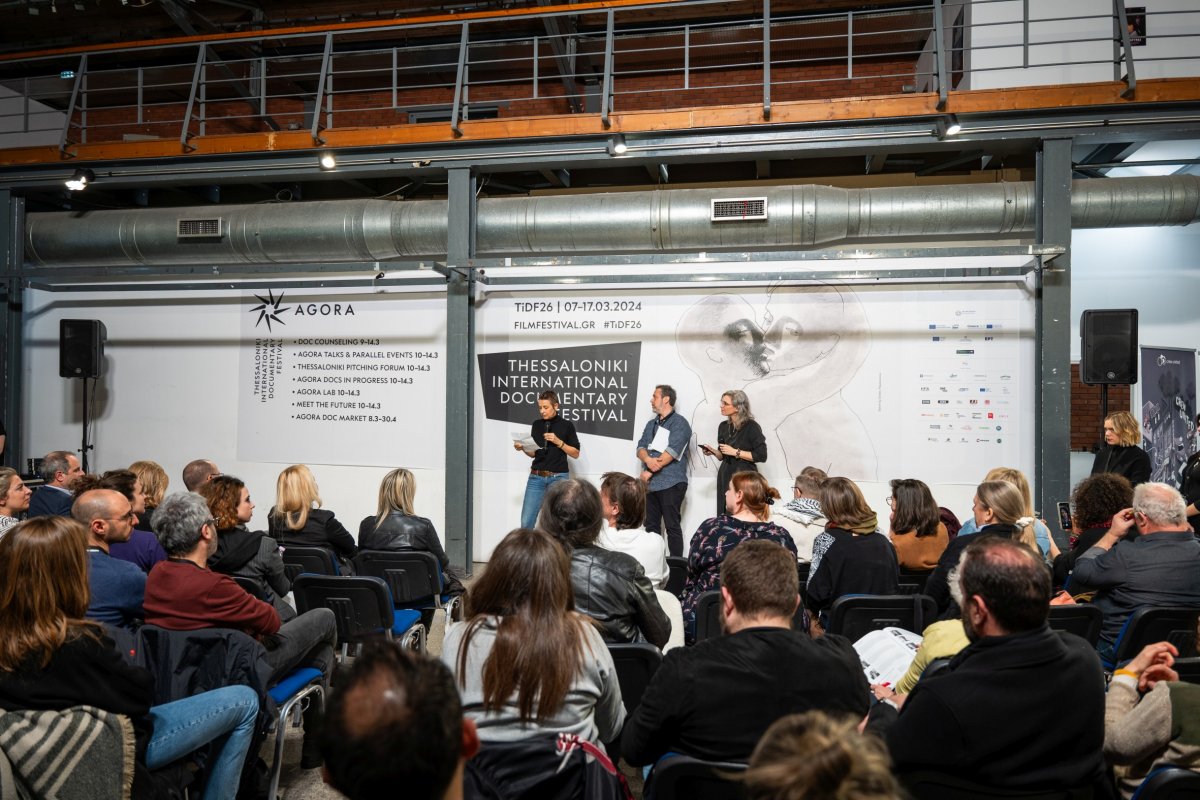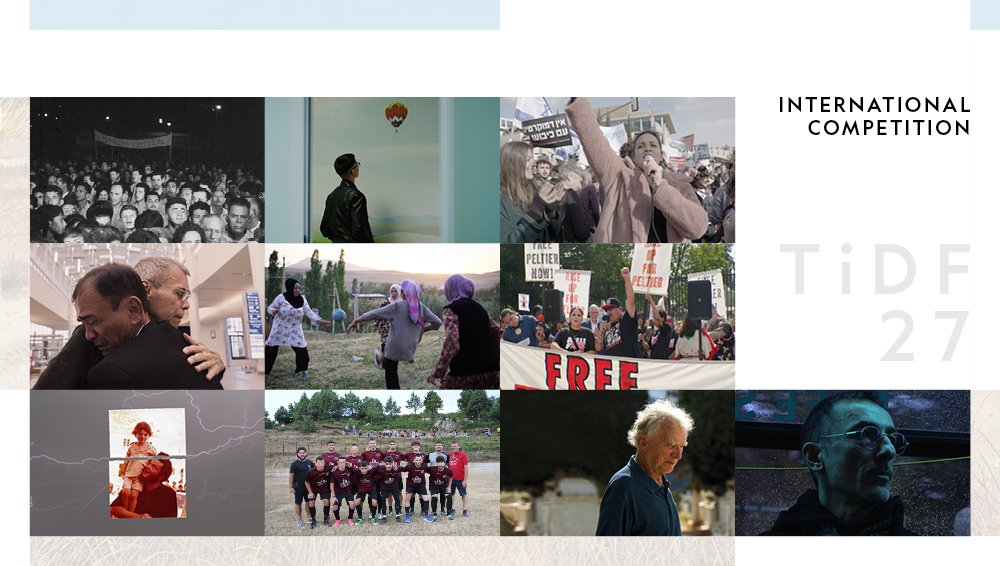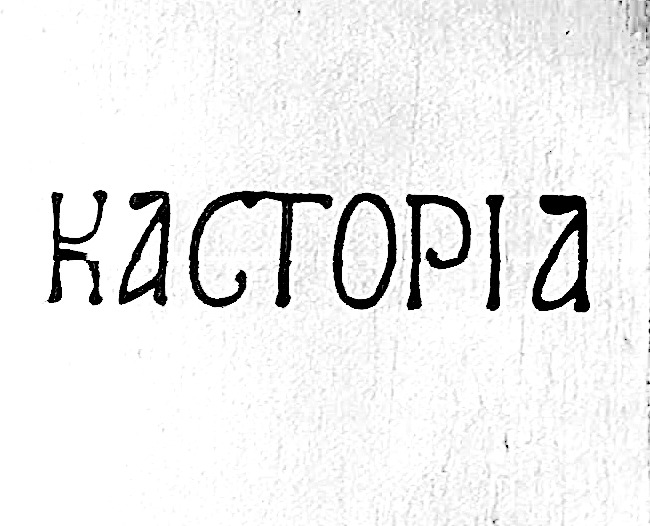18th Thessaloniki Documentary Festival –
Images of the 21st Century
11-20 March 2016
PRESS CONFERENCE
NEXT STOP: UTOPIA / SILENT WITNESS /
33,333 THE ODYSSEY OF NIKOS KAZANTZAKIS
Images of the 21st Century
11-20 March 2016
PRESS CONFERENCE
NEXT STOP: UTOPIA / SILENT WITNESS /
33,333 THE ODYSSEY OF NIKOS KAZANTZAKIS
As part of the 18th Thessaloniki Documentary Festival, the directors Apostolos Karakasis (Next Stop: Utopia), Dimitris Koutsiabasakos (Silent Witness) and Menios Carayannis (33,333 The Odyssey of Nikos Kazantzakis) attended a press conference on Thursday March 17th, 2016.
One of Nikos Kazantzakis’ least known works, “Odyssey”, caught the attention of Menios Carayannis, who in his research followed a unique route from Athens and Crete to Sweden and the U.S. Talking about his documentary 33,333 The Odyssey of Nikos Kazantzakis, the director stressed: “I made this film for two reasons. The first was the fact that such an important work remains in the shadow, which was a challenge for me. The second one was that I found out that an aged man in Sweden had learned Greek and translated “Odyssey” in his language, when only a few people would decide to engage in such a project”. Kazantzakis’ confrontation with Homer’s epic poem was of immense interest to the director. “In our minds, we think of Odyssey and Ithaca as the place where the journey ends. Kazantzakis holds a different stance. He says that the personal Odyssey of each man never ends. He takes Ulysses to new adventures, leading him in the way of a spiritual and cultural search, having the hero facing death in the end. It’s a difficult journey, a life’s journey”, Mr. Carayannis noted. As to the meaning of Kazantzakis’ words in the present context, the director stressed: “The writer’s position that the Odyssey never ends is also found in the number of the 33,333 verses of the poem, which is an irrational number. What we experience today brings back the question of how much we are able to sustain our humanity, go beyond our personal interest and empathize with our neighbor”. As far as the reasons why the old Swedish man decided to translate Kazantzakis’ work are concerned, Mr. Carayannis noted: “At some point, Gottfried said to me: “at 65, when I retired, I thought that my life’s Odyssey had just started, that is my real life. From there on I could do whatever I wanted”. So, the first thing he did was to enroll to university, although he was a professor up to that point, to learn Greek. Since I have a very good knowledge of Swedish, I am able to see how amazing his translation actually is; he even kept the poetic meter. Ultimately, when I read the “Odyssey” in a foreign language I realized that this way you are able to read the actual story, whereas in the Greek language you are more intrigued by the adventure of the language itself. It is more like running in a field full of thorns and having to discover each word every time”.
In his documentary Next Stop: Utopia, Apostolos Karakasis records the adventure of the occupation of the VIO.ME. factory in Thessaloniki. As the director explained: “We started recording this story one or two days before the occupation took place and carried on following it very closely for a year and a half and less regularly for another year. For two and a half years we stayed with the workers and did the filming”. The self-management model is rather infrequent in Greece. “In Argentina there are 350 companies that are run according to this model, which employ 16,000 people. I just learned that this morning in VIO.ME. they even had their power cut”, said Mr. Karakasis and went on adding: “I was not interested in making an informative film, giving out a huge amount of information. The film focuses on the transition in people’s way of thinking; most of the workers are nearly 50 years old and suddenly they are left with nothing. They are led to utopia through despair, not because they are romantic. Since they have no hope left the only reasonable way out is to dream of a world without central authority, a world based on solidarity”. The film also juxtaposes the opposite side, the side of the former employers. “Inside the world of the people of VIO.ME., different ideas, attitudes and strengths coexist, as well as elements that we see along the way. These people reflect society as a whole, and to this sample of a social pattern I also needed to add a representative from the opposite class, this is why we also see the former director of the factory”, as he explained. As far as the employees’ expectations from this documentary are concerned, Mr. Karakasis said: “Certainly, there is a give and take. When you ask these people’s confidence, you have to be clear and honest. From the beginning, I told them what I believed, that they entered a sort of a marathon and eventually they would hit the wall. Today that the power was cut off, some might want me to say publicly “connect the power”, while others who left would like me to say “close the factory”. I can’t respond to the expectations of the participants; the point is for me to be honest with them and for them to not regret standing in front of the camera”.
Dimitris Koutsiabasakos traveled to his home town, Trikala, to make his documentary Silent Witness. The central focus of the film is the Trikala prison, which closed in 2006, after 110 years of operation. The director recounted the time of filming: “We started making the film in 2011, when I was constantly traveling to Trikala for my film The Grocer. The old prison was one of the most distinctive and historic buildings in the city. In 2010, the municipality of Trikala decided to alter the use of the building and soon the Vasilis Tsitsanis Museum will open its gates there. So, I came up with the idea of doing a portrait of this building’s history”. In 2013, when the director thought that the filming had already finished, the archaeologists found the remains of an Ottoman bath in the foundations of the old prison. Referring to this unexpected development, Mr. Koutsiabasakos noted: “The approach in the script was to have the building tell its own story, through the voices of seven characters, former employees or old prisoners. Each one from his own experience reveals the palimpsest of memory of the prison. Then, in 2013, it was discovered that the same point had been one of the greatest Ottoman baths in Greece, built in the 16th century. Thereon, we continued the project as a film on the management of historical memory. One question raised was whether the memory of a building like the prison, with bad connotations, could have a place in the new reality. To my regret and wonder, I found out that there was no attempt to salvage anything from the prison as part of the memory. The images we have is of a building that no longer exists. I think that we have helped to the start of a dialogue – a response to what will be done”. In a strange way, through the adventure of this building, Mr. Koutsiabasakos saw the history repeating itself: “In 1896, Thessaly was liberated. The prison was among the first public buildings built. They had to convert the old bath to make this building. And this is silenced in the history of that period. Today, after so many years, it’s the same thing that goes on. They think of the old prison as something that has to be eliminated rather than coexist with the new museum. In fact, if this is done out of ignorance and not by intent, I think it is even worse”.



